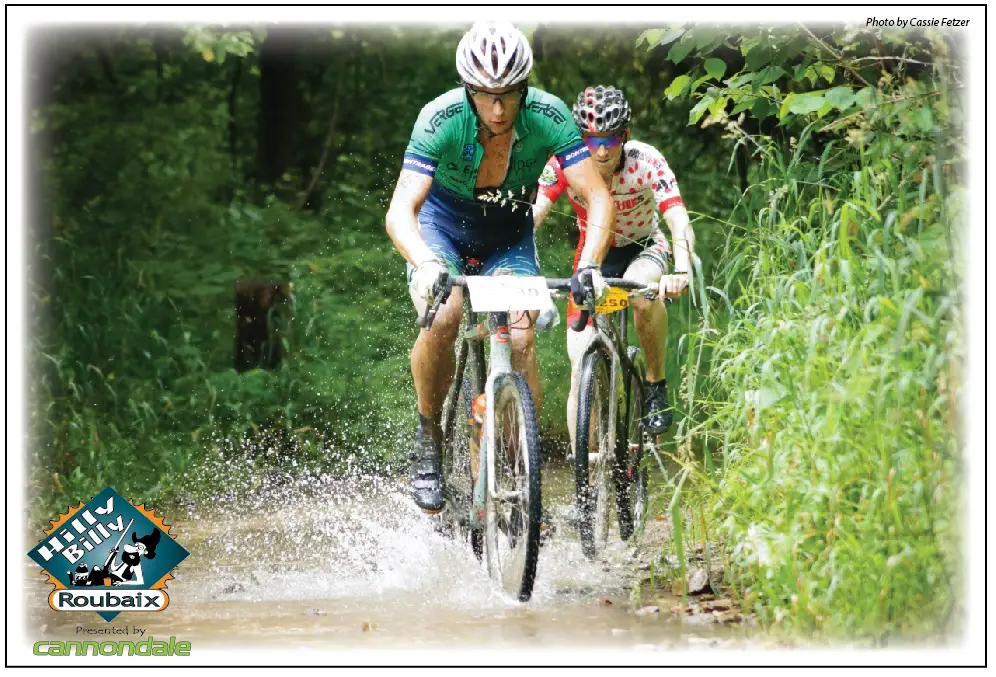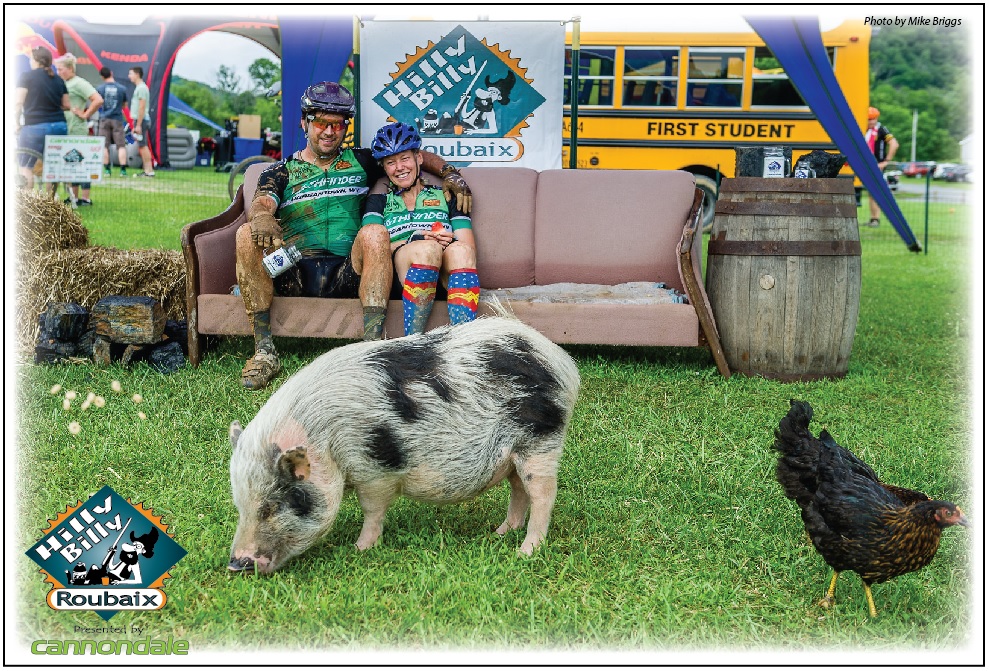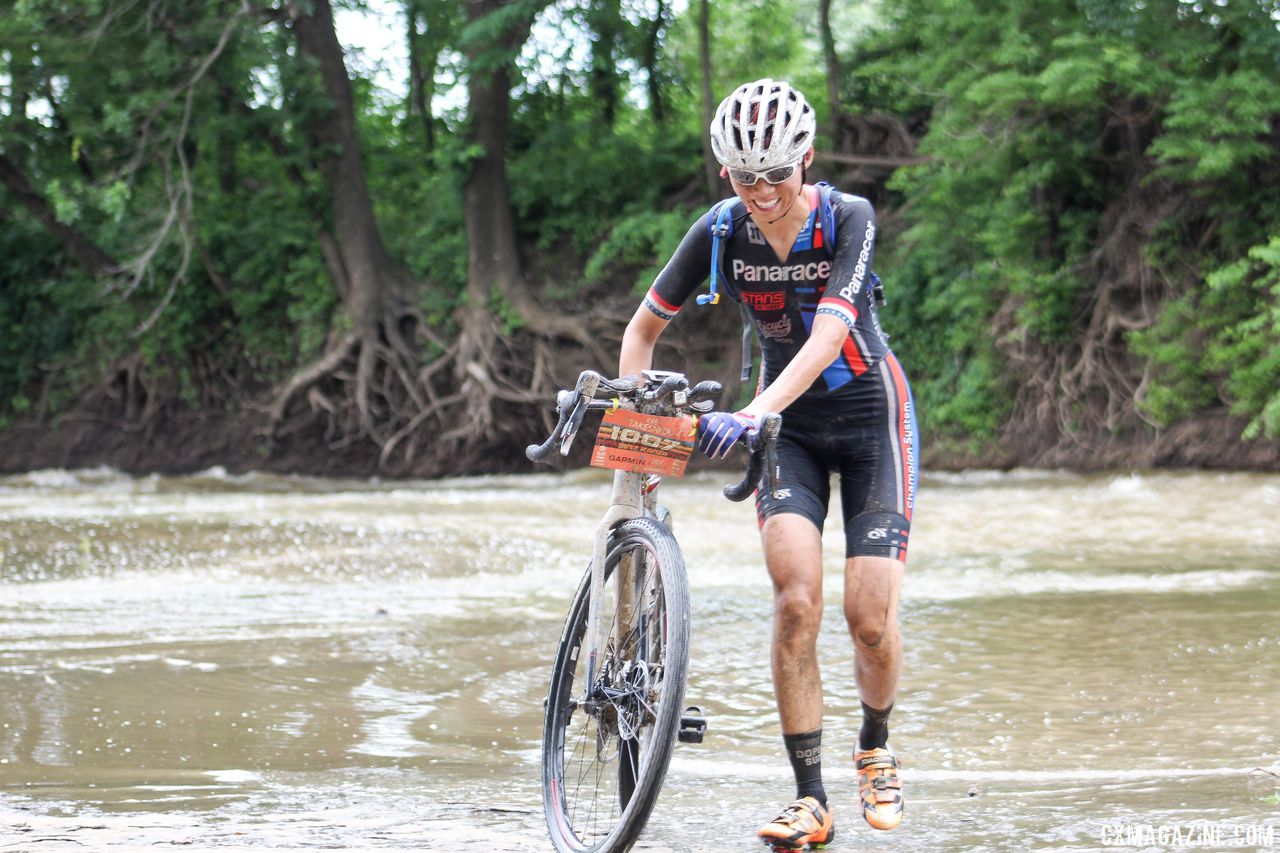
Folks from the Upper Midwest lovingly refer to residents of Illinois as “Flatlanders,” because, well, Illinois is generally pretty flat. However, nestled into the northeast corner of the state along the Mississippi River is a unique region that is anything but vertically challenged.
That region, known as the Driftless Area, is home to the annual Ten Thousand Gravel Grinder. Hosted by the Freeport Bicycle Company, the event is not a race so much as a challenge of endurance and climbing, as riders face roughly—you guessed it—10,000 feet of climbing over the 120-mile course west of the city of Freeport. All-told, the route has at least 15 big climbs as riders go up and down over pretty much every hill in sight.

Hills? There were plenty at the Ten Thousand. Illinois’ 2018 Ten Thousand Gravel Ride. © DREIBELBIS + FAIRWEATHER
The Ten Thousand event takes place in a region called the Driftless Area that by a fluke of geologic history was not flattened by glaciers during the most recent Ice Age. In fact, you may have seen the “Ice Age” movies, which I am pretty sure are a 100% factual documentary about the period.
The Driftless is mostly located in southwest Wisconsin, but part of it extends down into Illinois. Instead of having flattened terrain with the occasional drumlin, the Driftless Area looks like what you might expect to see in Vermont or elsewhere, with deep valleys and steep, tree-covered hills. The resulting terrain is beautiful to look at from the saddle of the bike, but each beautiful vista has to be earned with a lung-busting climb up the steep hill slopes.
In Wisconsin, the Driftless Area has become synonymous with “really hard rides.” The 107-mile Dairy Roubaix gravel ride held every April has a similar amount of climbing as the Ten Thousand, and the Horribly Hilly Hundreds being held this Saturday inspires people to pay money to ride literally every hill in sight around Blue Mounds State Park west of Madison. Oh yeah, and if Chicago had won its Olympics bid, the road race was going to be held in the region as well.
The 2018 Ten Thousand
The Ten Thousand’s race director is Stu Garwick of the Freeport Bicycle Company. Garwick took over the event in 2016 after Axletree saw it through its early days. Despite more riders coming west to subject themselves to the climbing, the event has stayed true to its roots.
“I remember Cyclocross Magazine wrote about the first Ten Thousand that also started in Freeport and it’s still just as grass-roots as it was in 2014,” he said. “It’s still a free event, there is no pre-registration, timing chips, or number plates. Riders just show up, sign a waiver, grab a map and we have a mass start at 9 a.m.”

Kae Takeshita got her final DK200 prep in at the Ten Thousand. Illinois’ 2018 Ten Thousand Gravel Ride. © DREIBELBIS + FAIRWEATHER
One thing that has changed for the Ten Thousand is the race lengths available for participants. The Ten Thousand started with only a 120-mile option, but as we are seeing with events ranging all the way up to the Dirty Kanza, adding shorter lengths helps make gravel events more inclusive and not just limited to the hardest core athletes out there. Since we last covered it, the Ten Thousand has added lengths of 75 and 50 miles. As we will see, those new lengths came into play in 2018.
The Ten Thousand route begins and ends in the city of Freeport, which is located just east of the extent of the Driftless Area in the aforementioned Flatlands. Fun fact about Freeport: its high school mascot is the Pretzel. Yep, the Freeport Pretzels. I feel like I have failed the reader in a way by not asking Garwick if there was an ample supply of twisted salty treats awaiting riders at the finish.
The route then heads west into the hills of the Driftless, tacking northwest to the town of Elizabeth and then heading south toward Mt. Carroll before heading back east. Midway through the route, riders get a brief beauty respite as they head south for four miles through the majestic Mississippi River valley. Then, of course, it’s back to the climbing.
Like most gravel events, navigating the route is … challenging. “We have a friend of the shop make really nice maps and cues but many roads are not marked,” Garwick said. “Navigation plays a big part in getting through the event.”

The hills and the heat provided a challenge for riders. Illinois’ 2018 Ten Thousand Gravel Ride. © DREIBELBIS + FAIRWEATHER
As I wrote about in my recap of the Dirty Kanza, gravel events can be what you want them to be, whatever name organizers give it. The Ten Thousand does not record times or do podiums, but nothing stopped riders who wanted to hammer the 120-mile route from throwing down against fellow athletes who were game. Everyone else was free to enjoy the challenge and take advantage of any stops available to escape the heat. The event itself does give out a small award to everyone who finishes the ride, however.

Each finisher got a plaque to commemorate their accomplishment. Illinois’ 2018 Ten Thousand Gravel Ride. © DREIBELBIS + FAIRWEATHER
The story of this 2018 Ten Thousand was that it was really hot. Like even hotter than 2017 Trek CX Cup hot. The event was held on the Sunday of Memorial Day weekend when temperatures soared into the 90s all across the Upper Midwest.
Garwick said the heat drastically changed plans for many of the riders. “About 125 riders took the start,” he said. “The temps were hot early in the day, out on the road Garmins were showing 100 plus degrees. A good majority of the riders changed plans as early as 20 miles into the ride. We had riders on the 50 miler trying to find shortcuts back. Many who set out for 120 changed plans at the point of no return and took the 75-mile route. And many of the 120-mile riders received rides in vans and pick-up trucks from good Samaritans. The finisher rate was very low.”

With temperatures nearing 120 degrees (or so it seemed), many riders took this as a sign to take the shorter route. Illinois’ 2018 Ten Thousand Gravel Ride. © DREIBELBIS + FAIRWEATHER
The extreme temperatures led to some creative pit stops. “A small bar in Loran, the Slurp and Burp, served as quite the oasis,” said Garwick. “It’s located 20 miles from the finish but in a deep valley with some tough climbing getting out. The cold AC and cold beers made it pretty easy to pull the plug and call for a ride.”
Then there were the impromptu rest stops that are a staple at gravel races. “My kids had a lemonade stand at mile 22, which turned out to be a savior for many. Comrade Cycles had a water and snack stop at mile 34, and a good friend of the shop set up a water stop at around mile 95. The route also passed through two towns with commerce where riders could get food and calories. Even with all that coddling we still had a low finisher rate[sic].”
When the sweat was poured and the gravel dust settled, all of eight riders had finished the 120-mile route with the eponymous 10,000 feet of climbing. The last finisher rolled in just before 9 p.m., not quite making the Race-the-Sun designation of finishing by 8:15 p.m.

This was one of the flatter sections of the course. Illinois’ 2018 Ten Thousand Gravel Ride. © DREIBELBIS + FAIRWEATHER
For gravel enthusiasts to whom the idea of 120 miles and 10,000 feet of climbing sounds appealing and those who bailed at the Slurp and Burp, Garwick said the Ten Thousand will be back for year six in 2019.
“We’re already planning for next year as many folks are talking about getting redemption,” Garwick said. “The plan is that it will always be the Sunday before Memorial Day.”
Photos provided by Dreibelbis and Fairweather.
The post Illinois’ 2018 Ten Thousand Welcomes Climbing Temps, Gravel Riders appeared first on Cyclocross Magazine - Cyclocross News, Races, Bikes, Photos, Videos.






 Jaron mounted up the new tan wall tubeless WTB Nano 700c x 40mm tires for Lost and Found. Custom Titanium Cyclocross/Gravel Bike Handbuilt by Dan Nelson. 2018 Lost and Found Gravel Grinder. © C. Lee / Cyclocross Magazine[/caption]
Jaron mounted up the new tan wall tubeless WTB Nano 700c x 40mm tires for Lost and Found. Custom Titanium Cyclocross/Gravel Bike Handbuilt by Dan Nelson. 2018 Lost and Found Gravel Grinder. © C. Lee / Cyclocross Magazine[/caption]












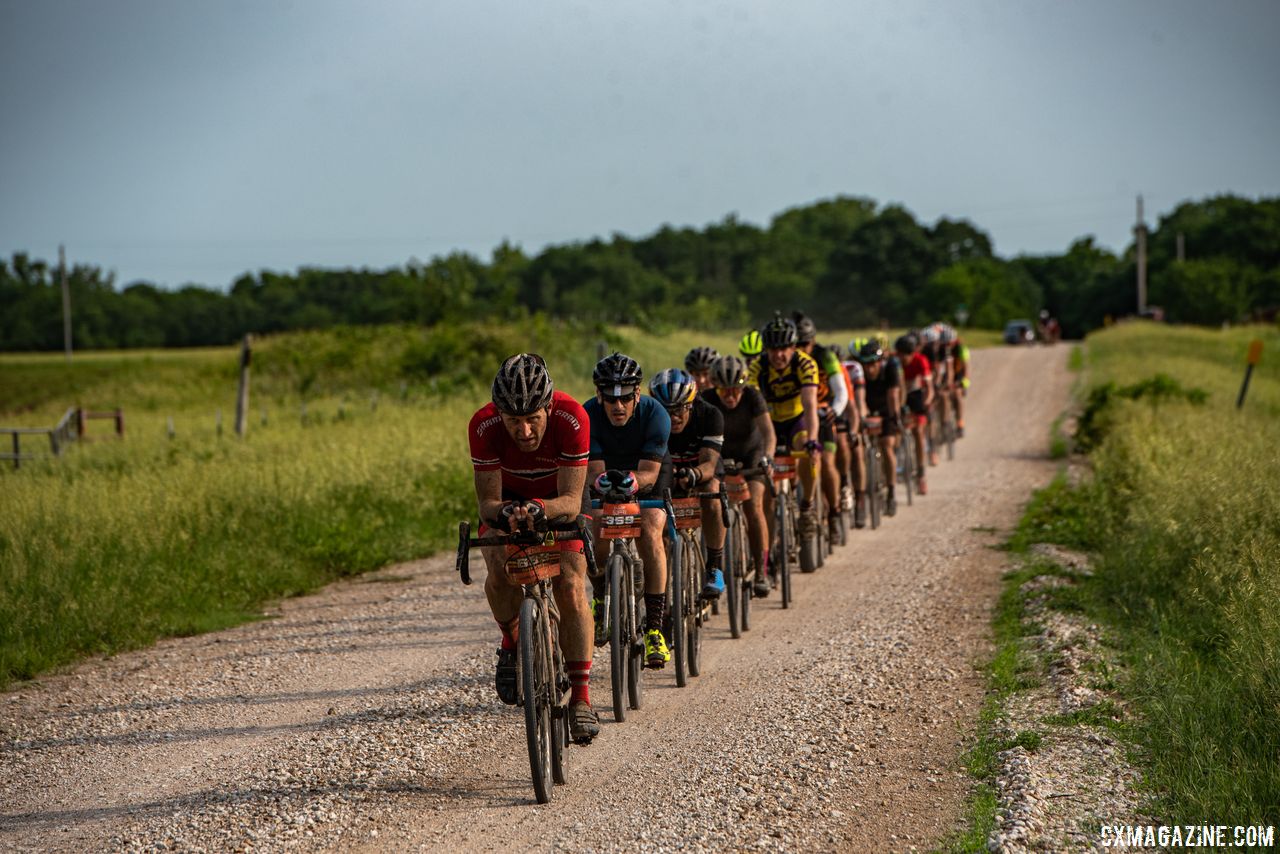
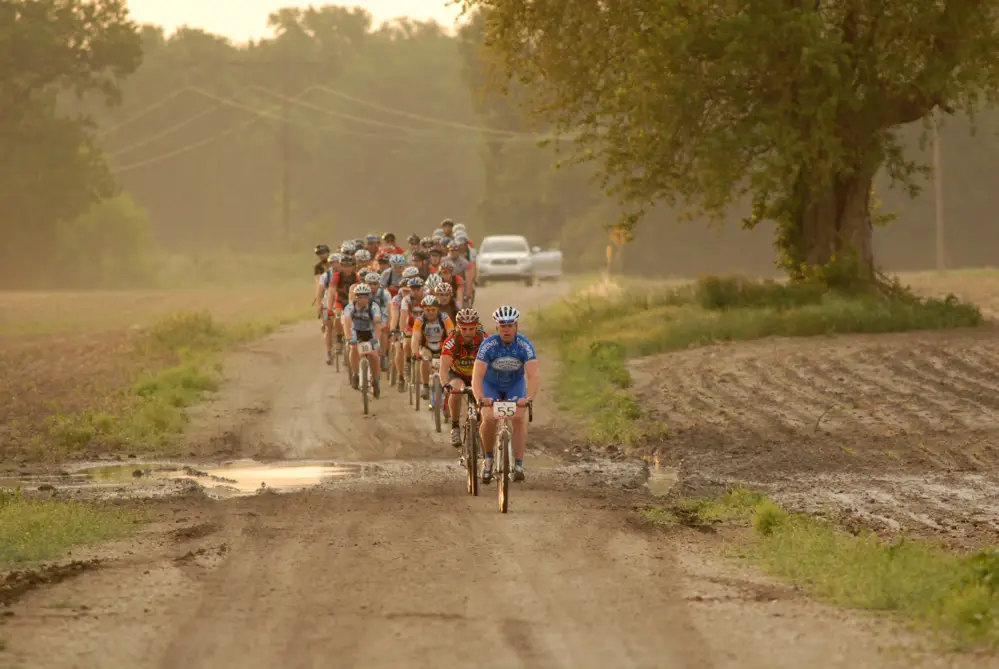

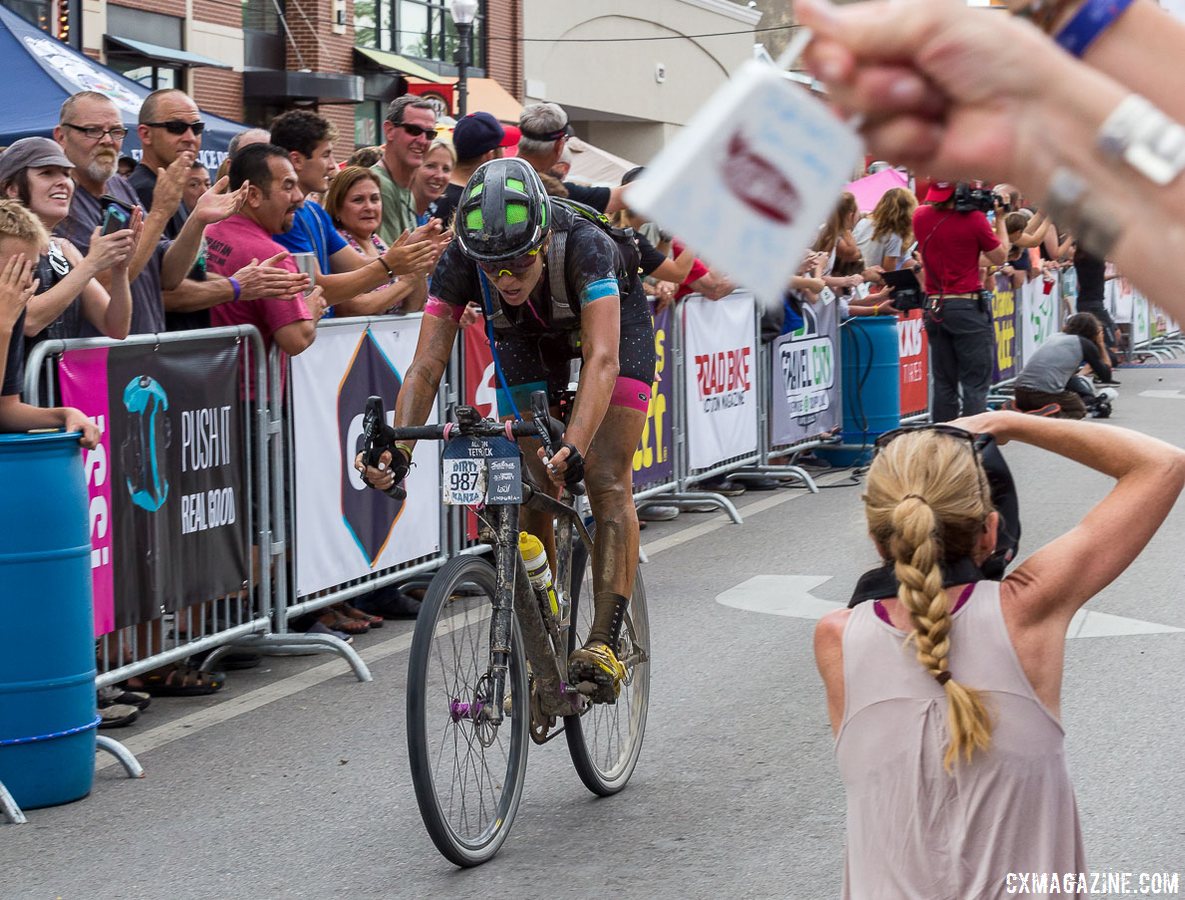

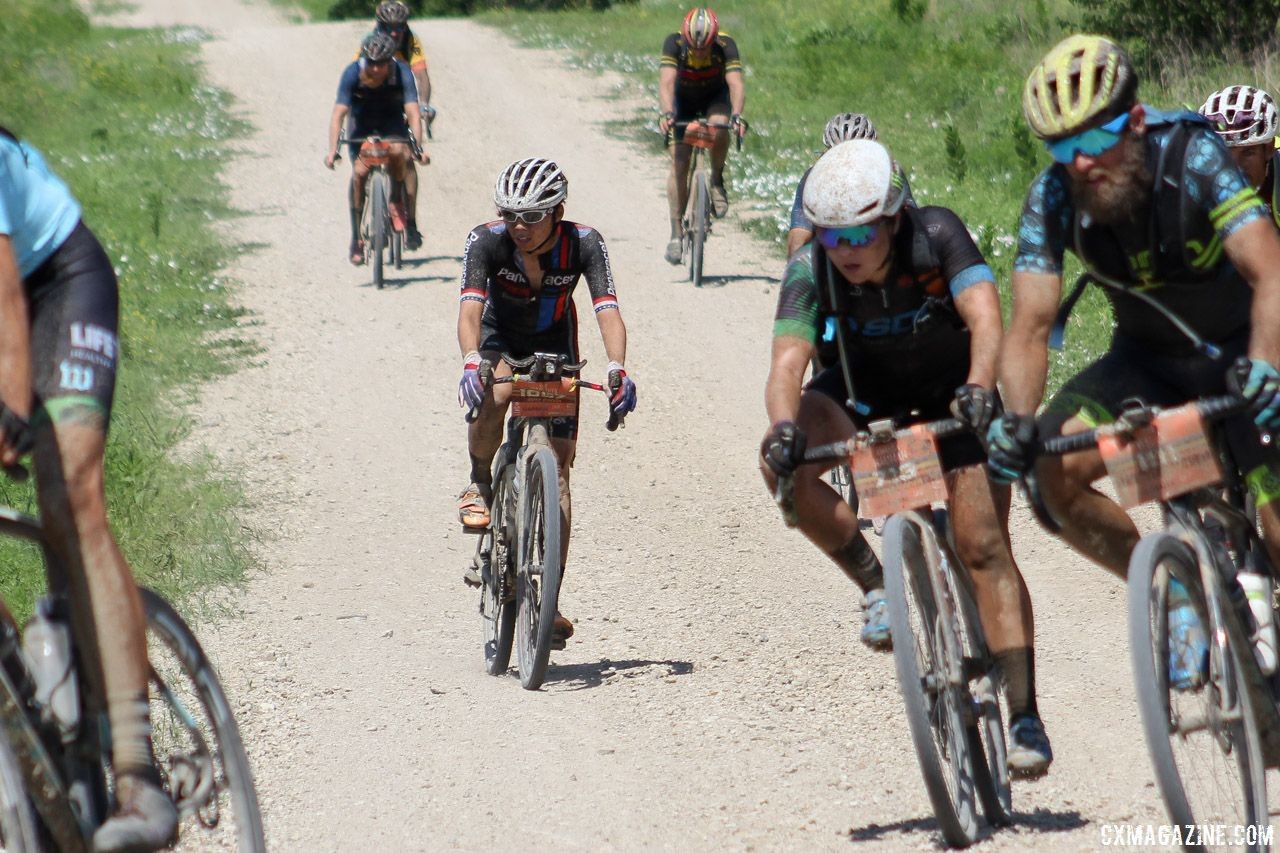
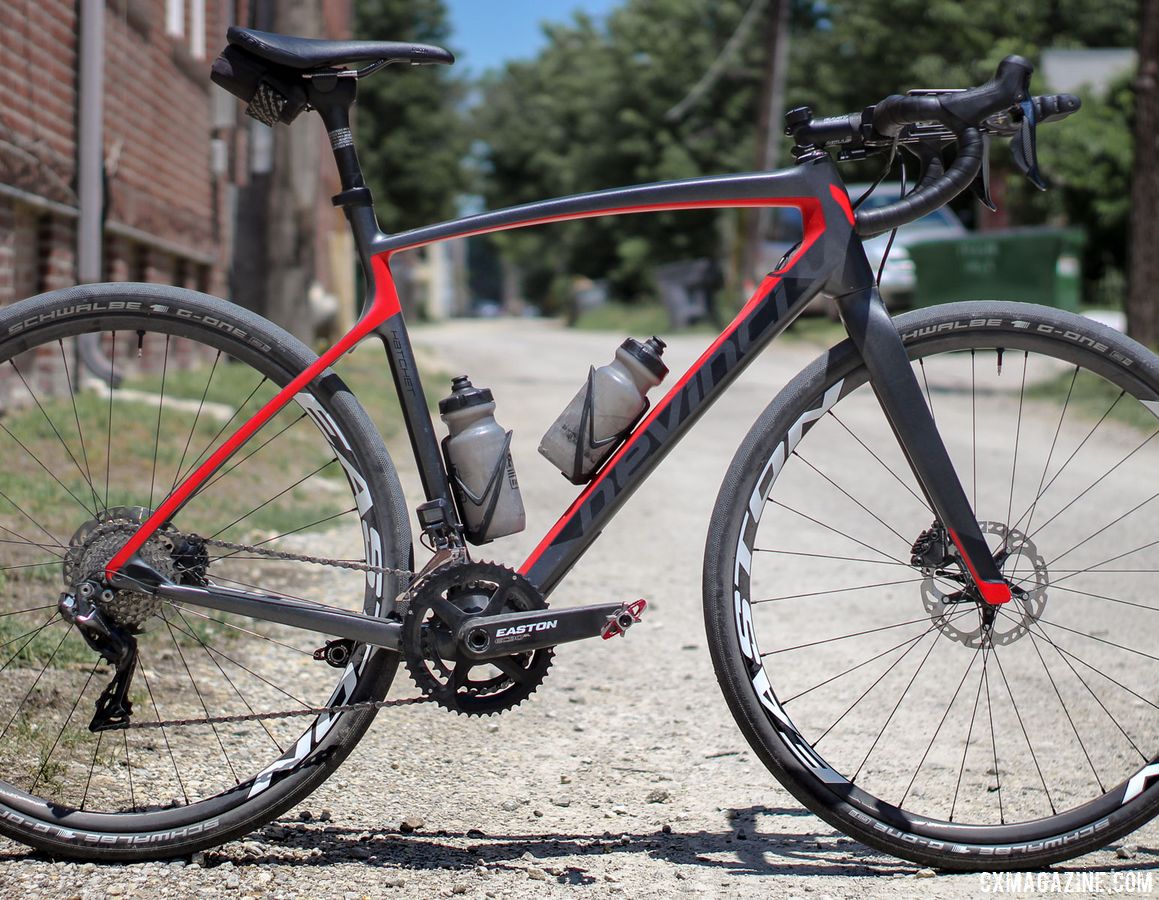




























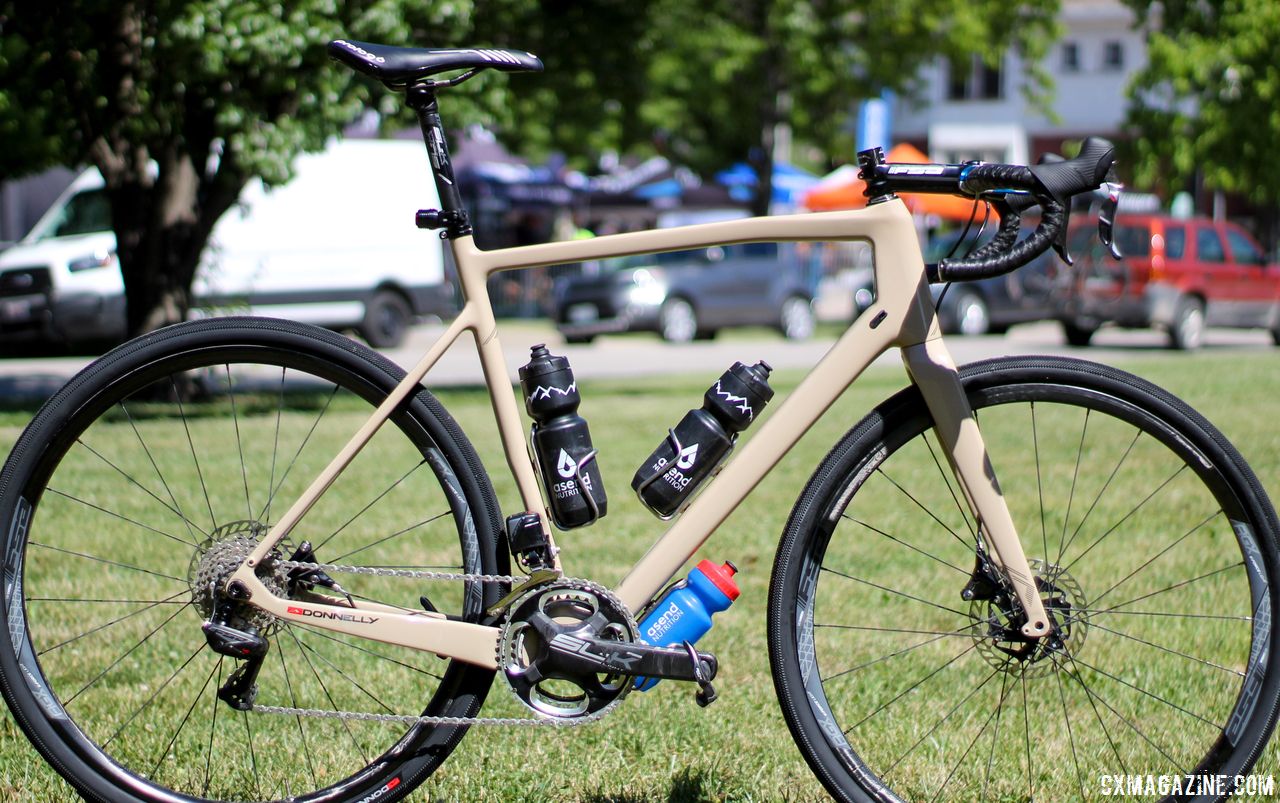




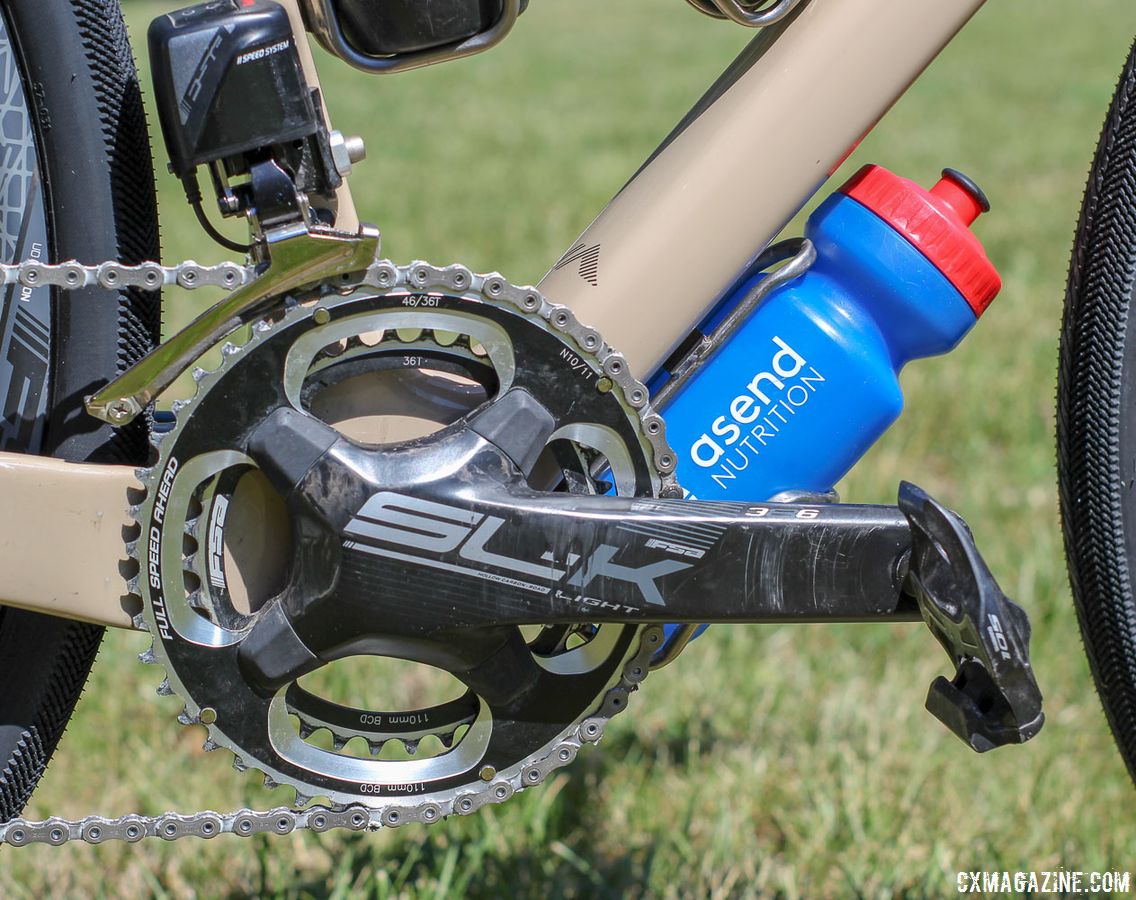




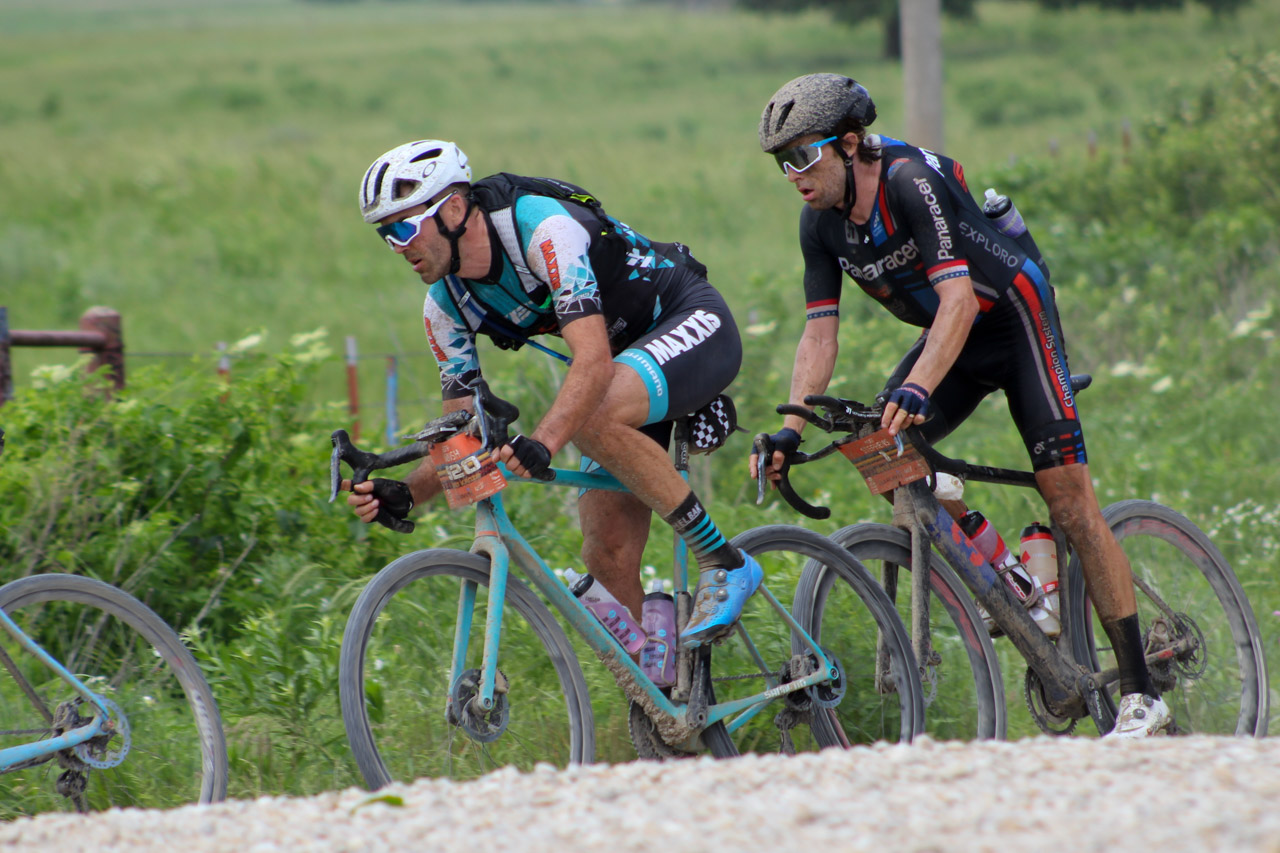


 let natural selection take place, aero bars + gravel = disaster if ya wanna pace line in that you take your chances
let natural selection take place, aero bars + gravel = disaster if ya wanna pace line in that you take your chances


















